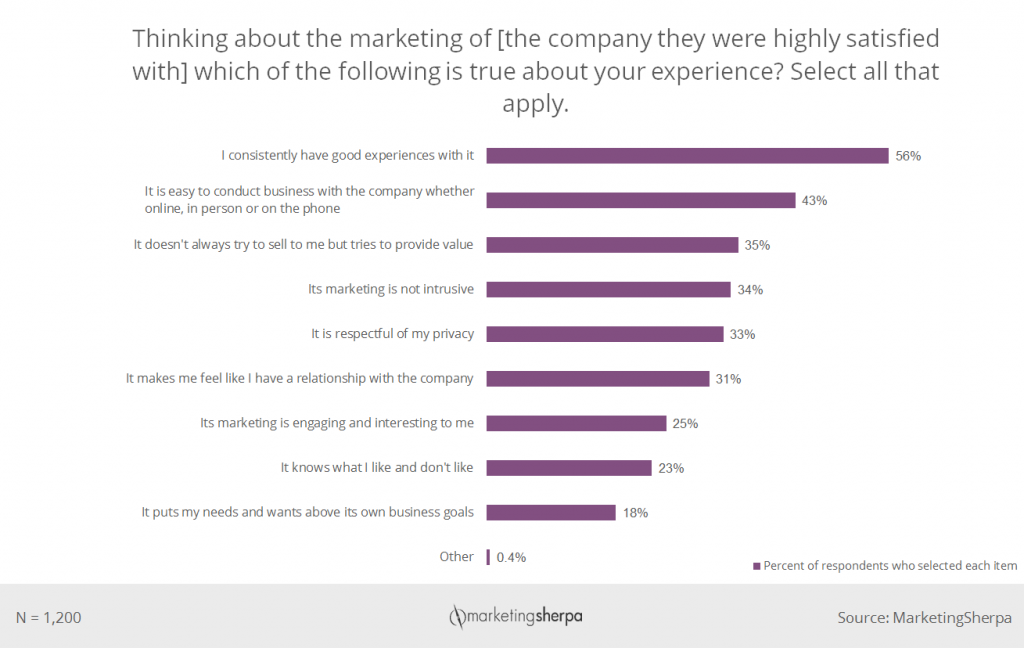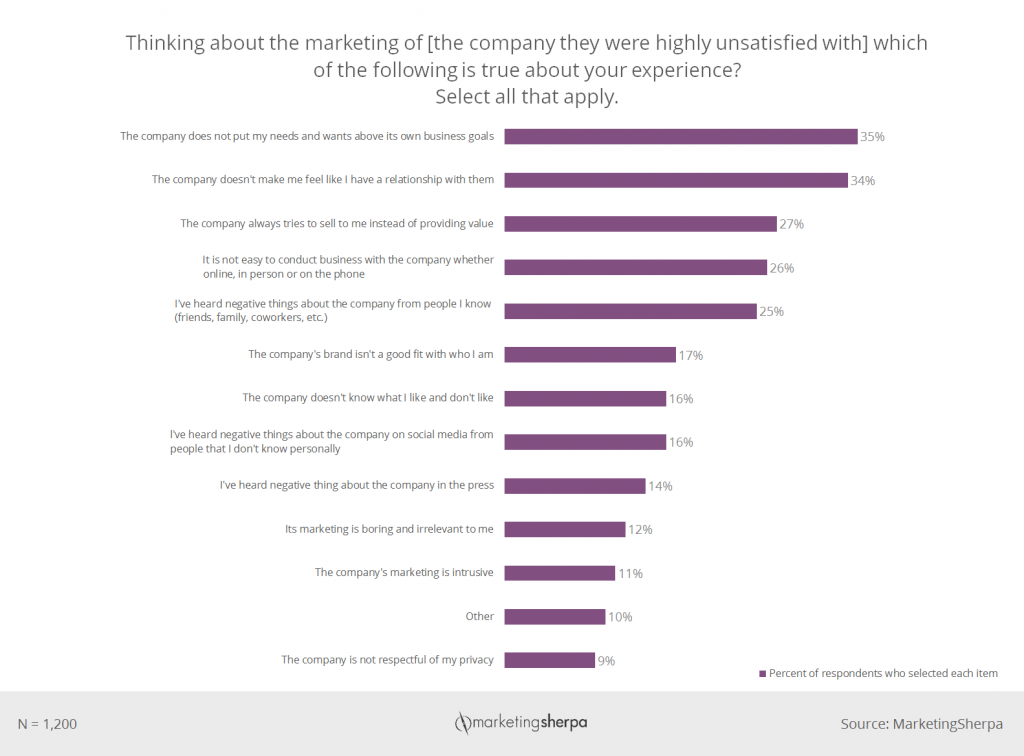Customer-First Marketing Research: 4 key data points from research with 2,400 consumers
All marketers should have three key questions in their head at all times. What do consumers really think about your business practices? What marketing approaches can I use to tell them about our business? And where do they want to hear these messages (i.e. channel preferences)?
To help you get an answer to these questions, we conducted research with 2,400 U.S. consumers, sampled to reflect a close match to the U.S. population’s demographics. But we also split them into satisfied and unsatisfied customers to understand how these marketing and business behaviors affect customer satisfaction, especially taking a customer-first marketing approach to all of these business decisions.
We published what we discovered in a 54-page free report filled with oodles of data for the customer-first, data-driven marketer.
But that’s much too much to dive into on a Friday.
So here are some snack-size, social media-friendly (wink, wink) videos to provide you some quick consumer insights from the study.
But first, here’s a little more background about the research.
And now a look at a few of our discoveries…











